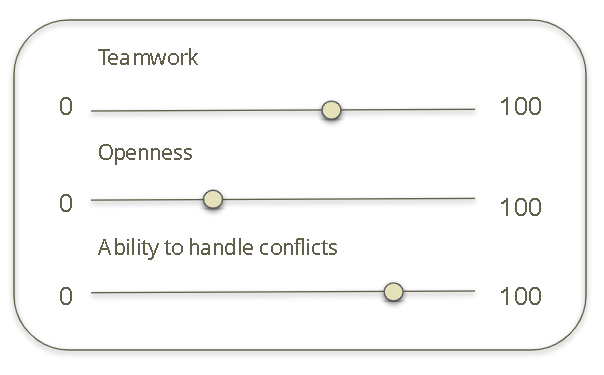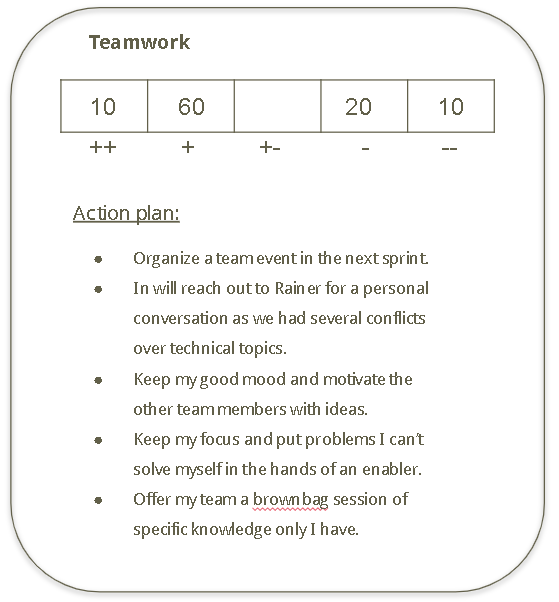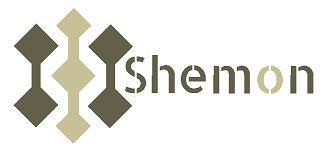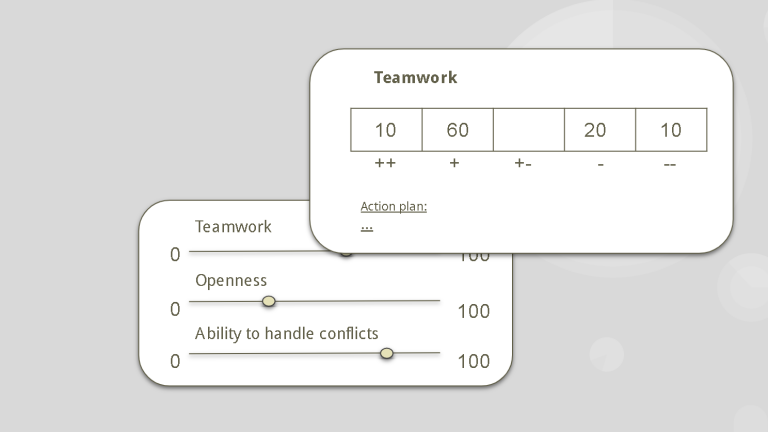When you start with a new Scrum or Kanban team the main focus is team building, coaching Scrum and Kanban and helping the different roles to improve and become self-organized. You work mostly with the whole team in events. Of course when you coach single roles like for example the Product Owner it is normally not done with the whole team. But it is not common to help team members with personal progress which in the end could also help the team.
In one of my last projects when my team reached a very advanced point I asked myself could it also be a good idea to coach them individually to find personal improvements and make a plan to reach identified goals. Of course, always considering an agile way of working. Would it give the team a benefit?
As this question was lingering in my head, I asked myself in the next step, how can you help them identify improvements but without interfering too much. It is always better to identify your own improvements instead of acting on someone else’s feedback because the likelihood is greater to implement a corresponding measure.
I started looking for a suitable method and, if necessary, to adapt it according to my needs. In my book repertoire I stumbled over “Solution Focused Rating”. In this book (Agile Teams lösungsfokussiert coachen von Veronika Kotrba und Ralph Miarka) it is described as a method for the skill development of employees which is solution-focused but more in the point of view of a person with management responsibility. What I especially liked about this way is that it focuses on solutions instead of problems.
But how does it work? A scale is very good for making a rough assessment of a skill. But by choosing only one value on a scale it is not really possible to identify changes after a reevaluation or even to put all your thoughts in it.

With the Solution Focused Rating you enter several values. 100 points are distributed in steps of ten on the scale of the observation period. It is a subjective evaluation of the person.
After this evaluation the manager or coach supports the employee to generate an action plan but only with asking specific questions:
- “What can you do so that the value at ‘+’ will remain the same?”
- “What can you do over the next 6 months to maintain or even lower the value at ‘–‘?
- “What would have to change the next 6 months so that there would be no value at ‘-‘ ?
- “Is this an action you will be able to measure for yourself?”
While answering these questions, the action plan comes up automatically and will be written down under the evaluation.
After looking over all values, the coach or manager asks the employee:
- “Do you think that all points are covered?”
- “How confident are you from 1 to 10 that you can implement your action and why?”

But now it is time to share my experience with this approach. I thought about topics which could help the individual team members to improve themselves and then my experiment could start.
Teamwork is something you always can think about, so this was for sure for everybody on my list.
Motivation sounded also interesting as in several projects I had the situation that influences from the outside made it sometimes really difficult to keep the motivation. For example no clear company strategy, no good working environment, outdated technology they were forced to use and so on. The moment you are really frustrated it is difficult to think about other things that could motivate you.
Focus also seemed good as every person is different and it is really easy to end in tasks you never planned to do in the beginning (“Yak-Shaving”, a pretty good term for that, but this will be another story in another post).
In the beginning of each coaching I explained that it has nothing to do with a development talk they maybe already know from their managers and that they will get no feedback from my side. In the next step I explained the theory of Solution Focused Rating with an example and made clear that everything said will never leave the room (Vegas Rule). It was also important for me to make clear that the focus is only the team itself. What improvements they can find for themselves which will also as a result help the whole team.
Everybody handled the distribution of the points on the scale differently. Some preferred to make notes and decided then how many points which value should get. Others just had to think about it.
After a maximum of ten minutes I started asking questions. With the form of the questions described above all the team members started automatically to describe why they put a specific number to a value and this way I could understand easily what they meant.
What I really love about this way is that you also define what you want to keep. Not everything is about better, faster, higher! If you are doing something really good, why shouldn’t you put your focus on keeping it! This can be sometimes hard too, especially if the team has to handle a lot of disorders from the outside.
As a Scrum Master it is also really important to observe the team members. You realize if there are small conflicts, if somebody is not feeling happy in the team or what the people are really good in. All these small observations came to light through this method and it was a great feeling to see that the team members were really good in self reflection. I had to do nothing for that, I was just asking questions.
For most of them it was then really easy to define action items. Only if the action was to general and therefore impossible to measure, like “I will try not to be angry again”, I tried to help them with questions to make it more clearly and easier to follow up.
There was also the case that I was asked for advice. Normally with this method it is not meant to give input but as I knew the team members very well and I could feel that there was really no idea coming up for an improvement I just gave different ideas which popped up in my head. And suddenly the own ideas were coming. So I think, if really needed, it is okay to deviate from the rules.
In the end everybody got the flip chart and the small task to find a way how they can remind themselves to keep track of the improvements.
During the next weeks I could observe that they were taking these improvements seriously as I saw the defined improvements coming to action. For me this was a sign of a successful experiment of individual coaching with an outcome for the whole team. Whenever it feels appropriate I will use this method again.
I also would like to encourage managers to use this method for the personal development of the employees. The topics can be adapted easily and the likelihood that it will really help your employee to improve is very high. But it also demands a high level of trust between both, which must not be abused in any way.
If you wonder now why the title of my post contains Solution Focused Improvements instead of Solution Focused Rating it is easily explained. I don’t really like the word “rating” as it can be misinterpreted. And isn’t it way better to put the identified action items into focus?


